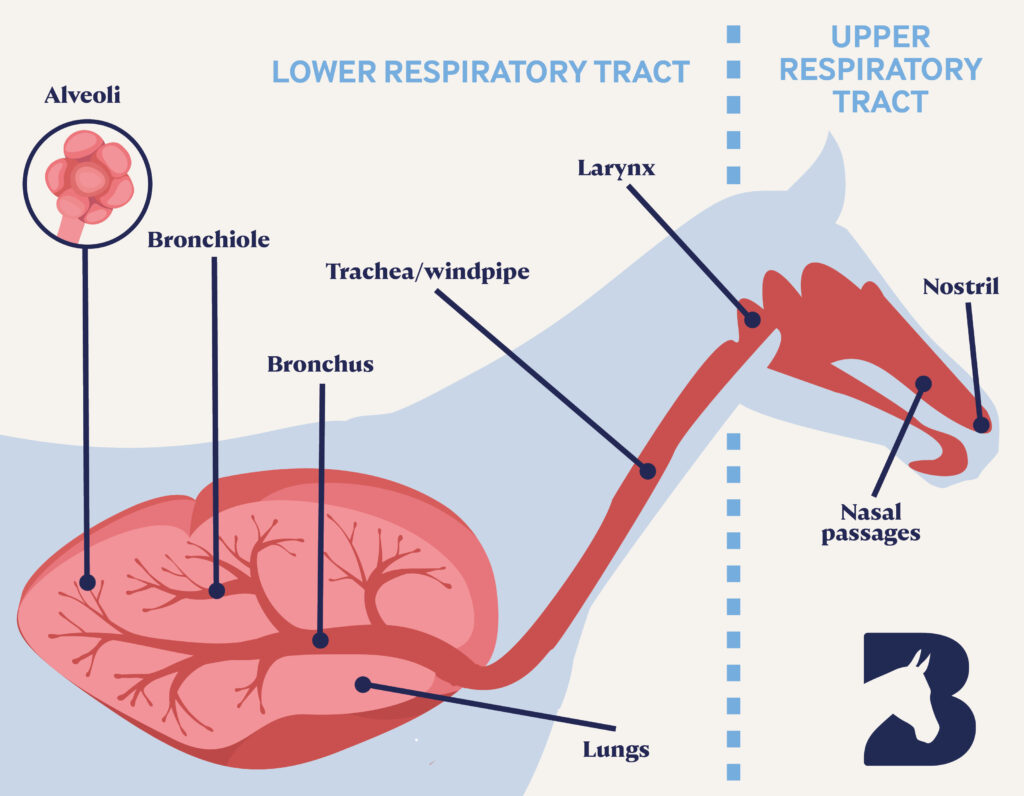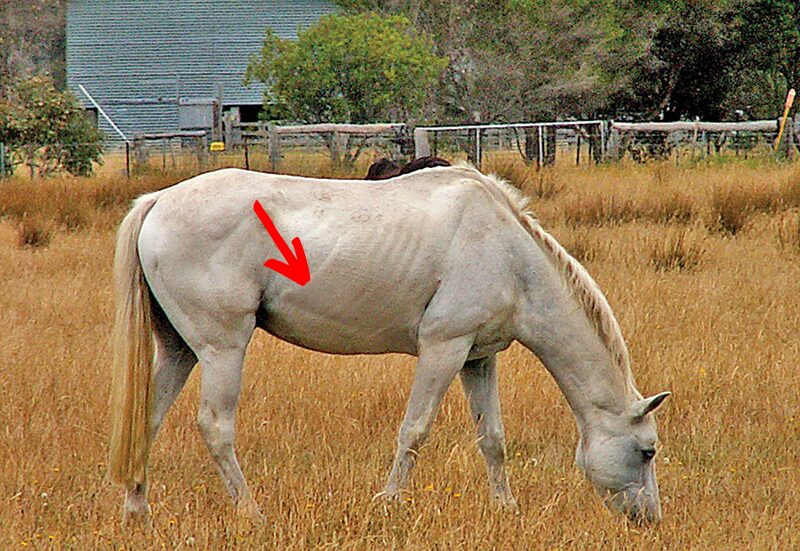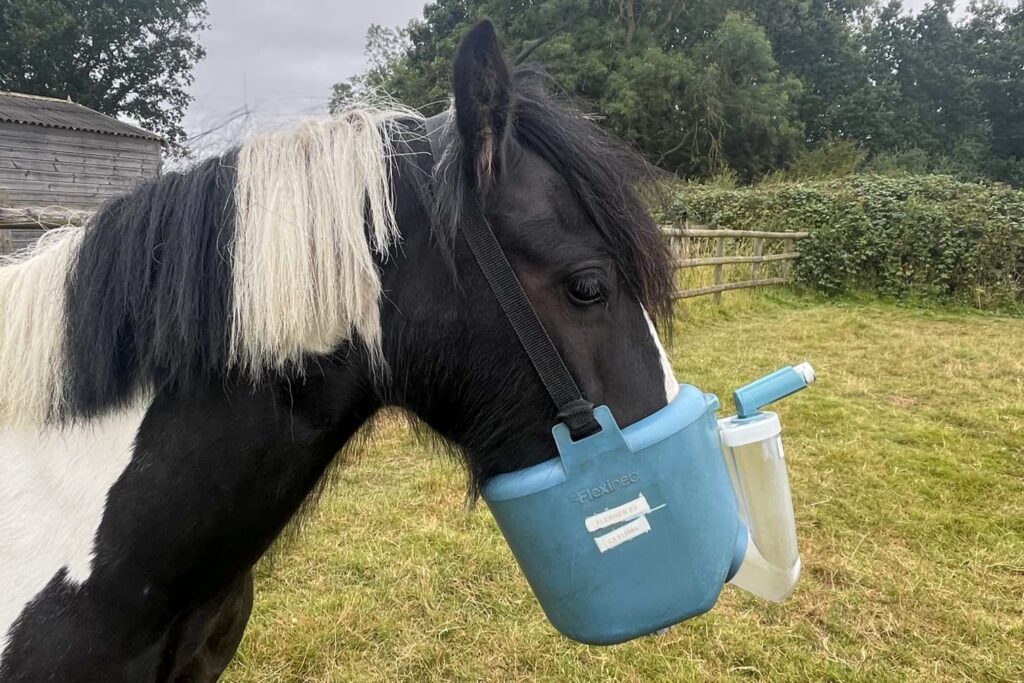EA is an inflammation of the tissues lining the horse’s airways. It causes the lining to thicken, produces more mucus, and, along with a tightening of the small airway muscles (bronchospasm), ultimately narrows the diameter of the airway tubes, meaning that less air can be inhaled and exhaled with each breath.
Horses prone to EA can suffer from respiratory problems at any time of the year. In the past, EA was known by other terms such as IAD (Inflammatory Airway Disease), RAO (Recurrent Airway Obstruction), COPD (Chronic Obstructive Pulmonary Disease), broken wind or Heaves.
EA is caused by an allergic reaction to dust or spores in hay and bedding, moulds, pollen, ammonia or bacteria. It can also be triggered by other irritants such as smoke or chemical sprays. SPASEA (Summer Pasture Associated Severe Equine Asthma) however, is a seasonal allergy to pollen spores in the air which means that although the symptoms can be similar or sometimes more severe, the horses will only be affected during the spring and early summer, depending on which pollens they are allergic to.

Severe attacks can be very distressing for the horse and for anyone who witnesses their extreme discomfort.
Stabled horses are mostly affected in the winter and spring, due to feeding forage, ammonia build up/dirty bedding & poor ventilation; allowing dust and spores to become trapped in the stable. In the summer months, if the horses are at grass full time, then the clinical signs may be significantly improved unless the horse is also allergic to the many pollens of that season.
Affected horses commonly have a chronic, frequent cough and nasal discharge (ranging from clear mucus to thick green/yellow discharge). Their respiratory rate (number of breaths per minute) will increase (normal at rest rate is 8-14 breaths per minute). It will also take more effort to breathe, particularly when they are put under stress or during exercise.
Some horses will develop a ‘heave line’, this is seen along the bottom edge of the ribs and is due to the increased abdominal effort required for breathing.

Severe EA cases can suffer weight loss.
We would advise calling an equine vet who will be able to establish the severity of the horse’s condition and prescribe a suitable course of treatment to help make them more comfortable. The best way of preventing or managing the condition is to try and identify the source of the allergy and limit the horse’s exposure to it as much as possible.
Some cases will respond to changes in management alone, if caught in the early stages. This involves removing the possible causes of the allergy (whether this is dust, pollen or fungal spores) and improving ventilation. Affected horses should be kept in a ‘dust free’ management system.

The vet will examine your horse, checking temperature as well as listening to the heart & lungs. It may be necessary to run some tests and/or perform an endoscopy of the airways known as bronchoscopy; this involves a fibreoptic tube (which acts like a camera) being inserted into your horse’s windpipe to see what is happening.
Your vet will advise if medication is required along with the change of management. Commonly prescribed medicines include corticosteroids to reduce the inflammation; bronchodilators are often prescribed to reverse the narrowing of the airways allowing the horse to breathe more easily. Sometimes mucolytics are dispensed to make the mucus or discharge more watery making it easier for the horse to cough it up or swallow.
Drugs may be given by injection or by mouth (tablets, syrup or powder) or by inhaler. Inhaled treatments can be delivered using a spacer device or more efficiently by using an equine nebulizer.
The vet will also be able to advise you about suitable levels of exercise for your horse and when they may be able to resume full work.
Remember we are here at Bransby Horses to support you with the health and welfare of your horse, if you require further information on any of the above or you would like to discuss your management plan please call 01427 787369 or email welfare@bransbyhorses.co.uk.
Return to our equine advice hub
See how best to care for your equine over the winter months.
Here are some tips to help you care for your equine over the summer.
Here's what to look out for over the autumnal period.
